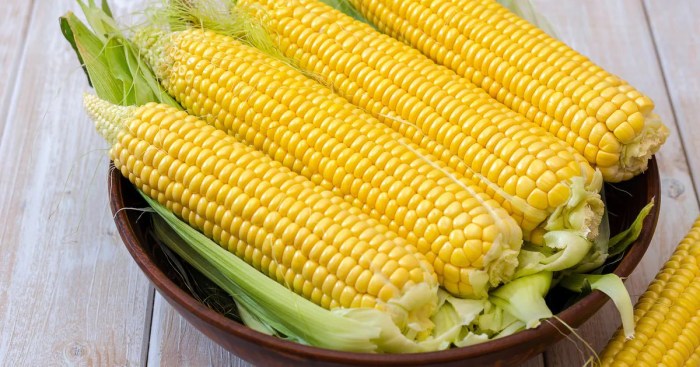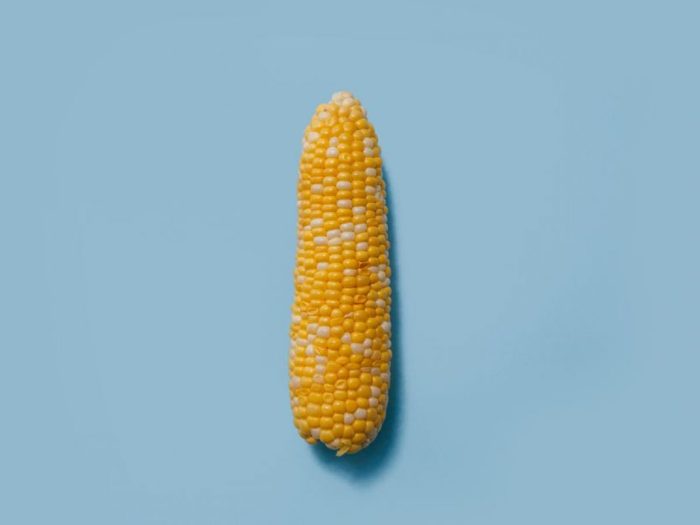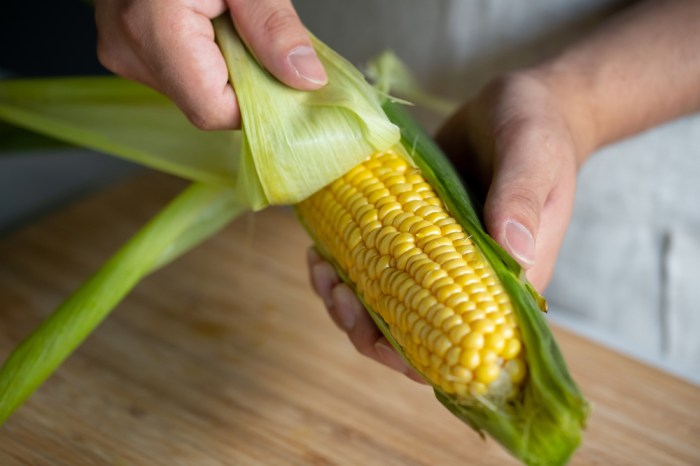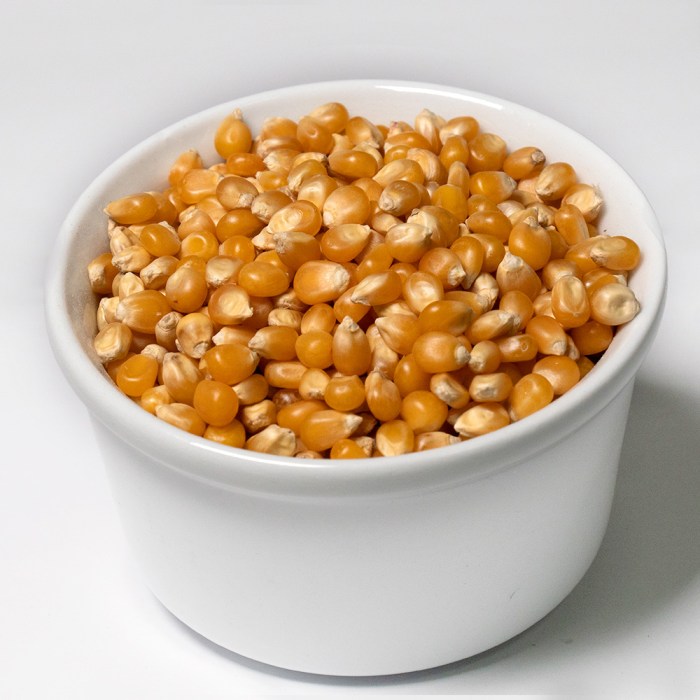As the age-old debate of el maiz es fruta o verdura takes center stage, we embark on a culinary adventure to unravel the botanical truth behind this perplexing produce. From its humble beginnings to its diverse culinary applications, corn has captivated taste buds and sparked scientific curiosity alike.
Join us as we delve into the intriguing world of corn, where the boundaries between fruit and vegetable blur.
Scientifically classified as a fruit, corn’s unique characteristics and culinary versatility have led to its widespread use in both sweet and savory dishes. Its nutritional value and agricultural significance further solidify its importance in our food systems.
Definition and Classification of Fruits and Vegetables

In botany, fruits are the mature ovaries of flowering plants that contain seeds. Vegetables, on the other hand, are all other plant parts, including roots, stems, leaves, and flowers.
Fruits and vegetables can be further classified based on their structure, function, and nutritional value. Common fruits include apples, oranges, bananas, and tomatoes. Common vegetables include carrots, celery, broccoli, and potatoes.
Edible vs. Inedible
Not all fruits and vegetables are edible. Some, such as unripe tomatoes and rhubarb leaves, can be toxic. It is important to only consume fruits and vegetables that are known to be safe.
Nutritional Value
Fruits and vegetables are an important part of a healthy diet. They are low in calories and fat, and they are a good source of vitamins, minerals, and fiber. Eating plenty of fruits and vegetables can help to reduce the risk of chronic diseases such as heart disease, stroke, and cancer.
Characteristics of Corn: El Maiz Es Fruta O Verdura

Corn, also known as maize, is a versatile and widely cultivated cereal grain. It is a member of the grass family and is characterized by its tall stalks, broad leaves, and distinctive kernels.
Physical Characteristics, El maiz es fruta o verdura
Corn stalks can grow up to 12 feet tall and are typically thick and sturdy. The leaves are long and narrow, with parallel veins running lengthwise. The kernels, which are the edible part of the corn, are arranged in rows on the cob.
They can vary in color from yellow to white to red and are encased in a tough outer shell.
Types of Corn
There are several types of corn, each with its own unique characteristics and uses:
- Sweet cornis the most common type of corn consumed by humans. It has a sweet, juicy flavor and is typically eaten fresh, boiled, or grilled.
- Field cornis a type of corn that is grown primarily for animal feed and industrial uses. It has a higher starch content than sweet corn and is often used to make cornmeal, cornstarch, and ethanol.
- Popcornis a type of corn that pops when heated. It has a hard outer shell that traps steam, causing the kernel to explode and turn inside out.
Nutritional Value
Corn is a good source of several essential nutrients, including:
- Carbohydrates:Corn is a complex carbohydrate that provides energy for the body.
- Fiber:Corn contains both soluble and insoluble fiber, which can help promote digestive health.
- Protein:Corn is a relatively good source of protein, providing about 10 grams per cup.
- Vitamins:Corn is a good source of vitamins A, C, and K.
- Minerals:Corn is a good source of minerals, including magnesium, phosphorus, and potassium.
Scientific Classification of Corn

Corn, scientifically known as Zea mays, belongs to the grass family, Poaceae. It is closely related to other cereal grains such as wheat, rice, and barley. Corn is a member of the genus Zea, which contains only one other species, Zea diploperennis.
Evolutionary History of Corn
Corn has a long and fascinating evolutionary history. It is believed to have originated in Mexico about 10,000 years ago from a wild grass called teosinte. Over time, humans domesticated and selectively bred teosinte, resulting in the development of modern corn.
Corn has since become one of the most important crops in the world, used for food, animal feed, and industrial products.
Culinary Use of Corn

Corn, a versatile ingredient, plays a significant role in cuisines worldwide. Its sweet, starchy kernels lend themselves to various cooking methods, from boiling and roasting to grilling and frying.Corn is often used as a main ingredient in dishes like cornbread, polenta, and cornmeal mush.
It adds texture and a slightly sweet flavor to salads, soups, and stews. In Mexican cuisine, corn is a staple ingredient in tortillas, tamales, and elotes (grilled corn on the cob). In the United States, corn is a beloved summer treat, enjoyed boiled, roasted, or grilled.The
cultural significance of corn varies across cuisines. In Native American cultures, corn is considered a sacred crop and is often used in traditional ceremonies and dishes. In many African countries, cornmeal is a staple food, used to make porridge, flatbreads, and other dishes.
Whether corn is a fruit or a vegetable is a topic of debate. But while we’re on the subject of biology, have you heard about the pill bug lab ? It’s a fascinating experiment that explores the behavior of these tiny creatures.
And just like corn, pill bugs can teach us a lot about the natural world and the importance of scientific inquiry.
In Europe, corn is primarily used as animal feed, but it is also gaining popularity as a human food ingredient.
Corn in Agriculture
Corn is a widely cultivated cereal grain that plays a crucial role in global agriculture. Its versatility and adaptability have made it a staple food source and an essential ingredient in numerous industries.Corn production has a significant economic impact worldwide, generating billions of dollars in revenue annually.
It is a major source of food, feed, and fuel, contributing to food security and economic development in many regions.
Cultivation Methods
Corn is grown in a variety of climates and soil types, but it thrives best in warm, humid conditions with ample sunlight. The cultivation process typically involves the following steps:
- Soil preparation:The soil is tilled and fertilized to provide optimal conditions for seed germination and growth.
- Planting:Corn seeds are planted at a specific depth and spacing to ensure proper growth and yield.
- Irrigation:Corn requires regular irrigation, especially during dry spells, to maintain soil moisture levels.
- Fertilization:Corn benefits from additional fertilization throughout the growing season to supplement soil nutrients.
- Pest and disease control:Corn plants are susceptible to various pests and diseases, which need to be managed to protect the crop.
Harvesting Techniques
When the corn reaches maturity, it is ready for harvesting. The harvesting method depends on the intended use of the corn.
- Grain corn:Grain corn is harvested when the kernels are fully mature and dry. It is typically harvested using combines, which separate the kernels from the cob.
- Sweet corn:Sweet corn is harvested when the kernels are still immature and tender. It is typically harvested by hand or using specialized harvesting equipment.
- Forage corn:Forage corn is harvested when the entire plant is still green and succulent. It is used as animal feed and is typically harvested using forage harvesters.
Frequently Asked Questions
Is corn really a fruit?
Botanically speaking, yes, corn is classified as a fruit due to its development from the ovary of a flowering plant and containing seeds.
Why is corn often considered a vegetable?
Culinarily, corn is commonly used in savory dishes and lacks the sweetness typically associated with fruits, leading to its widespread perception as a vegetable.
What are the different types of corn?
There are various types of corn, including sweet corn, field corn, popcorn, and ornamental corn, each with distinct characteristics and culinary applications.